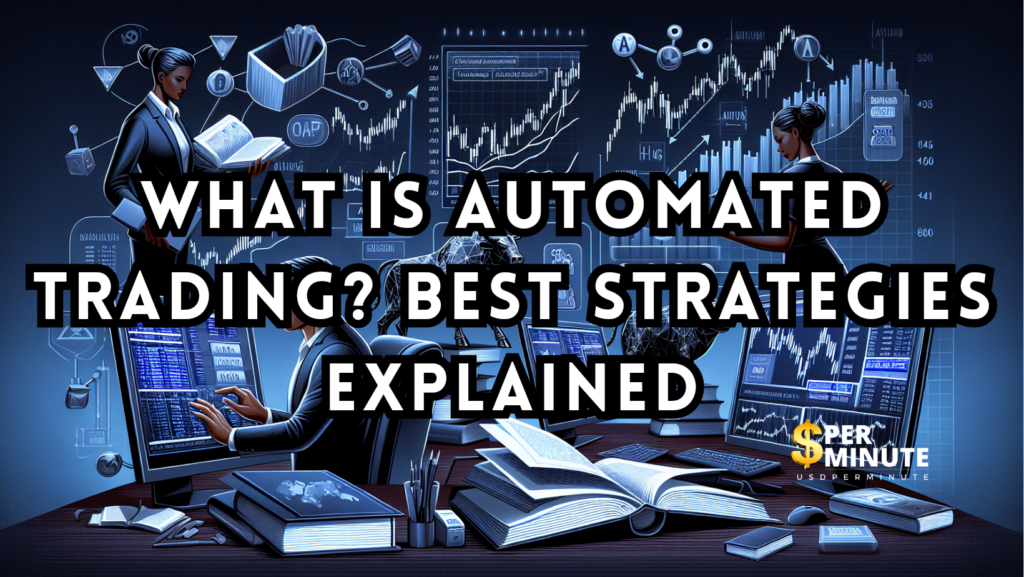What is Automated Trading? Best Strategies Explained

Automated trading, also known as algorithmic trading, involves using computer programs to execute trades based on predefined criteria. This method leverages technology to enter and exit trades at optimal times, eliminating the emotional and psychological factors that can affect trading decisions. Here, we explore what automated trading is, its benefits, and some of the best strategies to employ.
What is Automated Trading?
Automated trading uses algorithms to analyze market conditions and execute trades based on specific rules. These rules can be based on various factors, including price, timing, volume, and other mathematical models. Automated trading systems can execute orders at speeds and frequencies that are impossible for a human trader.
Key Features:
- Speed: Executes trades in milliseconds.
- Precision: Follows predefined rules without deviation.
- Efficiency: Handles multiple trades simultaneously.
Benefits of Automated Trading
- Eliminates Emotional Bias
- Reduces the impact of emotions such as fear and greed on trading decisions.
- Improves Order Execution
- Executes trades at the best possible prices.
- Backtesting
- Tests strategies on historical data to gauge their viability.
- Consistency
- Ensures consistent application of trading rules.
- Diversification
- Allows trading across multiple markets and instruments simultaneously.
Best Automated Trading Strategies
1. Trend Following
Description: This strategy involves algorithms that identify and follow market trends. The system buys when prices are trending up and sells when they are trending down.
Key Elements:
- Moving Averages: Uses indicators like the Simple Moving Average (SMA) or Exponential Moving Average (EMA) to identify trends.
- Breakouts: Trades when prices move beyond resistance or support levels.
Advantages:
- Easy to implement and understand.
- Works well in trending markets.
Disadvantages:
- Can perform poorly in sideways or choppy markets.
2. Mean Reversion
Description: Based on the idea that prices will revert to their historical mean, this strategy involves buying undervalued assets and selling overvalued ones.
Key Elements:
- Bollinger Bands: Identifies overbought and oversold conditions.
- RSI (Relative Strength Index): Measures the speed and change of price movements.
Advantages:
- Profitable in range-bound markets.
- Lowers the risk of large losses.
Disadvantages:
- Can incur losses during strong trends.
3. Arbitrage
Description: Exploits price differences of the same asset across different markets or forms.
Key Elements:
- Statistical Arbitrage: Uses mathematical models to identify price discrepancies.
- Triangular Arbitrage: Involves trading different currency pairs to exploit discrepancies.
Advantages:
- Low-risk strategy.
- Takes advantage of market inefficiencies.
Disadvantages:
- Requires fast execution and low latency.
- Limited opportunities in highly efficient markets.
4. Market Making
Description: Involves placing buy and sell orders to profit from the bid-ask spread.
Key Elements:
- High Frequency: Requires high-speed execution.
- Volume-Based: Profits from large trading volumes.
Advantages:
- Generates consistent, small profits.
- Provides liquidity to the market.
Disadvantages:
- Requires sophisticated technology and infrastructure.
- High competition from other market makers.
5. Momentum Trading
Description: Trades based on the strength of recent price movements, buying assets with high momentum and selling those with low momentum.
Key Elements:
- Price Momentum: Measures the rate of price change.
- Volume Analysis: Confirms the strength of price movements.
Advantages:
- Capitalizes on strong price movements.
- Effective in volatile markets.
Disadvantages:
- Can lead to significant losses if momentum reverses quickly.
- Requires constant monitoring.
Conclusion
Automated trading offers a sophisticated approach to trading that can enhance efficiency, consistency, and profitability. By implementing the best strategies such as trend following, mean reversion, arbitrage, market making, and momentum trading, traders can leverage the power of algorithms to optimize their trading activities. However, it’s crucial to continuously monitor and adjust these strategies to align with changing market conditions and ensure optimal performance.